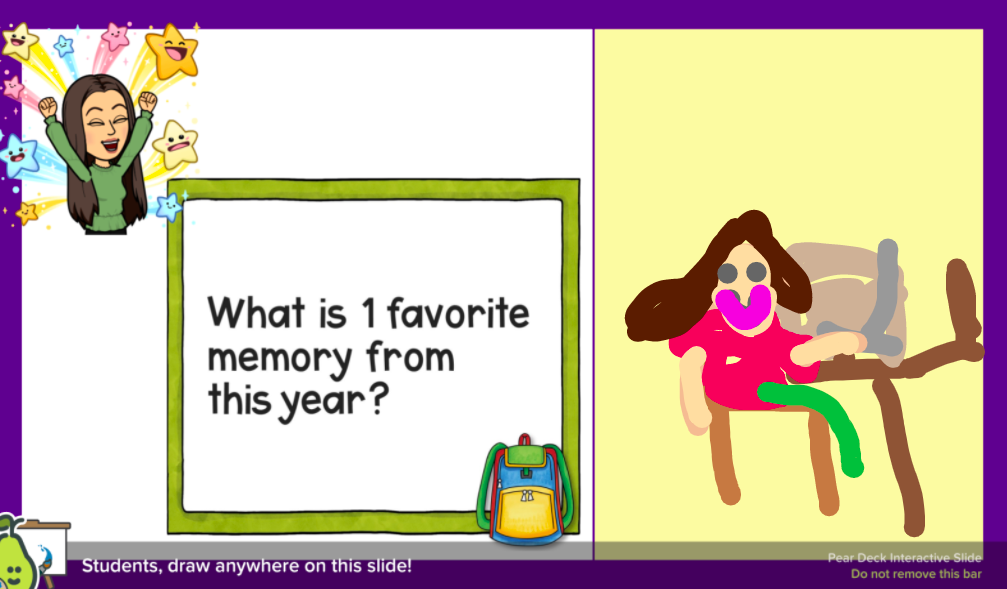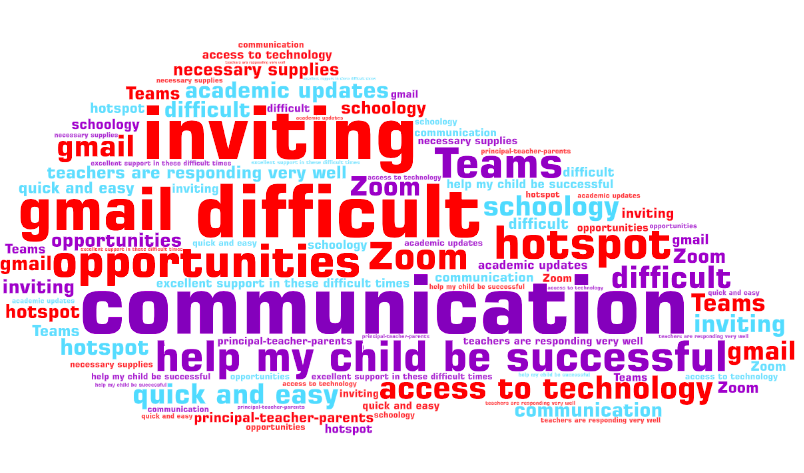The events that occurred in March 2020 will remain a vivid memory for educators, students, and parents for years to come. The magnitude of the COVID-19 pandemic caused school closures all over the world and affected millions of public school students. This mass disruption impacted educators’ planning and delivery of curriculum, students’ social and academic lives, and parents’ productivity. Headlines centered around unideal learning environments, learning loss, and inequitable access to technology have dominated the media for the past year.
The COVID-19 pandemic has been a shocking event for educators, students, and parents, but these experiences may perhaps be where we grew and learned the most. These challenges revolutionized education. When we could not support our students physically, online learning stepped up and filled a need. This past year, our school leaders and communities have dedicated countless hours to ensure that all students had the resources and care to succeed during these unprecedented times. NexGen News was founded by educators, for educators, students, and parents. Throughout the 2020-2021 school year, we have spoken with different teachers, students, and parents to understand their journey and experiences with virtual learning. Read on for some of the silver linings we have discovered from this past school year.
Educators: Educators are evolving.
Educators may have secured a permanent time slot for Social and Emotional Learning (SEL).
From the very beginning of the pandemic, educators were tasked with not only connecting all necessary technology, materials, and communication with families, but we were asked to continue teaching when our students were experiencing the same sadness, anxiety, and isolation that was experienced by the rest of the world. As students were reconnected with their teachers and classmates online, learning could not just pick up where it left off, instead our students needed to be checked on and nurtured. Schools across the country implemented protected Social and Emotional Learning (SEL) blocks into students’ schedules. SEL is the process in which students learn and apply the knowledge, attitudes, and skills to manage their emotions.
Since the onset of the pandemic, teachers have taught students how to cope with a range of emotions, build social awareness, self-management, and make responsible decisions to help them navigate distance learning. Most importantly, extra measures have been taken to help students still build meaningful relationships online with their peers and continue to feel connected. Prioritizing SEL has provided students with the tools to adjust to online learning, manage their emotional distress, and has helped students maintain connections. Now that some students are returning to campus, SEL has remained a part of daily instruction, and may continue to be a permanent part of the curriculum. Need some SEL lessons for the upcoming school year? Be sure to check out the following NexGen News lessons that help facilitate Social and Emotional Learning.
- “Chess for Success”
- “Social Robots Help Children with Autism”
- “Malala’s Magical Journey”
- “Seven Year-Old Influencer Challenges Disability Stereotypes”
Educators and schools have been meeting students’ needs at home in creative ways.
Furthermore, once students were connected online, their home lives and access to technology were spotlighted. Educators no longer had a small glimpse of a students’ life outside of school and family dynamics. Instead, we were now in students’ living rooms and kitchens working with all family members. Although we weren’t connecting with our students and learning about their lives through daily walks to the cafeteria or side conversations before or after school, we learned more about them than ever before. We have learned about students’ interests through posters on their walls, and learned about students’ cultures and language by seeing them interact with their families. We have used this knowledge to inform our planning, connect content with our students interests, and most importantly, understand the necessary flexibility needed to educate our students in their home environments. Schools and teachers have provided alternatives to traditional assignment criteria, along with school-based meals and behavioral and mental health services. Discovering and providing the necessary support to meet students’ needs has helped keep students engaged and successful throughout distance learning.
Students: Students are skilled.
Our students have become technology wizards.
The pandemic further spotlighted how resilient our students are. Students as young as 5 years old have learned how to access video learning platforms, resources online, publish their writing, and collaborate with other students virtually. As we return to in-person learning, we can see that technology is still essential to students’ education, and will continue to be. Students now have access to more educational learning resources than before, have adjusted to technological routines, and have now have been provided with multiple avenues to show their learning. Their new breadth of knowledge opens up further opportunities to do more with our students and continue to transform them into digital citizens, creative communicators, and empowered learners. As all schools return to the in person instruction, students’ technological skills will transfer and help them grow holistically across academic areas.

Parents: Parents are partners.
Parents have become an even more essential part of the learning process than ever before.
Parents, caregivers, administrators, and teachers have banded together to help our students succeed during this time. Parents, especially for the youngest of learners, have assisted with connecting students with their teachers, keeping students accountable for attending and submitting assignments, and keeping students motivated to learn through these difficult times. Parents have sacrificed their time and resources to set the ideal environment, to help their children and our students succeed. Parents have had a direct impact on the learning process, especially with distance learning. As schools slowly reopen, teachers and parents will hopefully continue to build upon the partnerships that were forged during the pandemic.

This crisis has changed each one of us individually and collectively. Although some schools have reopened their campuses and the days of teaching and learning from our homes may be behind us, many of these new changes may stay in place for years to come, as we continue to value and build on our new knowledge and relationships.
Written by NexGen News staff member, Brittany Acevedo.


